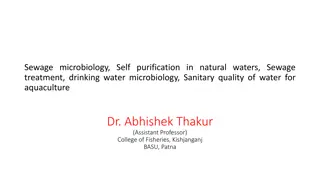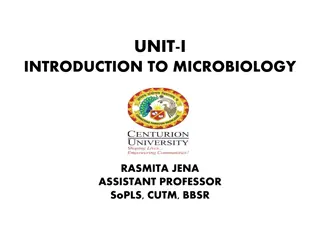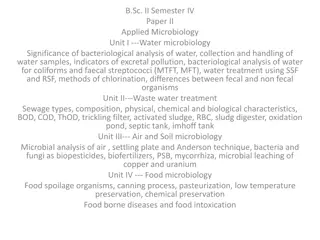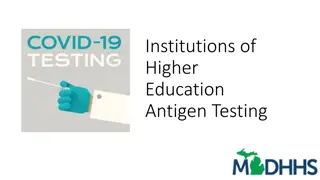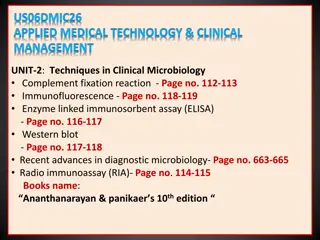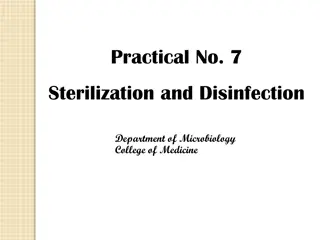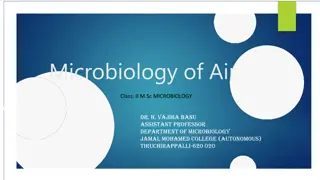Understanding Microbiology Testing Methods and Results
Explore the various methods of microbiology testing, learn to interpret microbiological test results, and understand antibiotic susceptibility testing. Discover details on bacterial, viral, and parasitic infections through laboratory reports and supporting results like WBC counts and pathogen identification. Delve into bacterial culture, biochemical testing, and antimicrobial susceptibility testing to enhance your knowledge of microbiology standards and identification techniques.
- Microbiology Testing
- Laboratory Reports
- Antibiotic Susceptibility
- Bacterial Culture
- Pathogen Identification
Download Presentation

Please find below an Image/Link to download the presentation.
The content on the website is provided AS IS for your information and personal use only. It may not be sold, licensed, or shared on other websites without obtaining consent from the author. Download presentation by click this link. If you encounter any issues during the download, it is possible that the publisher has removed the file from their server.
E N D
Presentation Transcript
Microbiology Tests What do They Mean? Shawna Dereemer, MT(ASCP) Interim Laboratory Administrator Laboratory Preparedness Supervisor
Objectives Summarize various microbiology testing methods List components of a laboratory report Interpret various microbiological test results Summarize antibiotic susceptibility testing and results
Infectious Disease Bacterial Viral Parasitic
Supporting Laboratory Results Viral Identification of virus Normal or Decreased WBC Count Increased Lymphocyte Count Parasitic Identification of parasite Increased Eosinophil Count Bacterial Identification of bacteria Increased WBC Count Increased Neutrophil Count Left-shift in Neutrophil Cell Line Increased CRP Increased Sed-Rate
Bacterial Culture Grow and isolate bacteria Pros Identify the isolate Very specific Cons Lengthy Normal flora Various media Identify a pathogen
Antimicrobial Susceptibility Testing Determine antibiotic susceptibility or resistance P. aeruginosa Ceftazidime 19mm Intermediate
Antimicrobial Susceptibility Testing P. aeruginosa 0.125 mg/dl Susceptible
Molecular Testing DNA Probes DNA Sequencing Nucleic Acid Sequencing (16s) Whole Genome Sequencing (WGS or NGS) Nucleic Acid Amplification Testing (NAAT) Polymerase Chain Reaction (PCR) Ligase Chain Reaction (LCR) Transcription Mediated Amplification (TMA)
DNA Sequencing (16s) Unusual isolates Automated instrumentation will not identify Low confidence levels
Nucleic Acid Amplification Testing (NAAT) Chlamydia/Gonorrhea testing M. tuberculosis testing
Virology PCR No culture isolation
Immunology/Serology Chlamydia/GC testing HIV Hepatitis B & C
Immunology/Serology Quantaferon (IGRA) MMR status (measles, mumps and rubella) Varicella (chicken pox) Syphilis (RPR)
Water Lab EPA Water Lab Total Coliform E.coli New environmental testing coming soon
Contact Information Shawna Dereemer, MT(ASCP) Interim Laboratory Administrator Laboratory Preparedness Supervisor shawna.Dereemer@wyo.gov 307-777-3735
References M100 Performance Standards for Antimicrobial Susceptibility Testing, Clinical and Laboratory Standards Institute, 28th Edition, January 2018.




